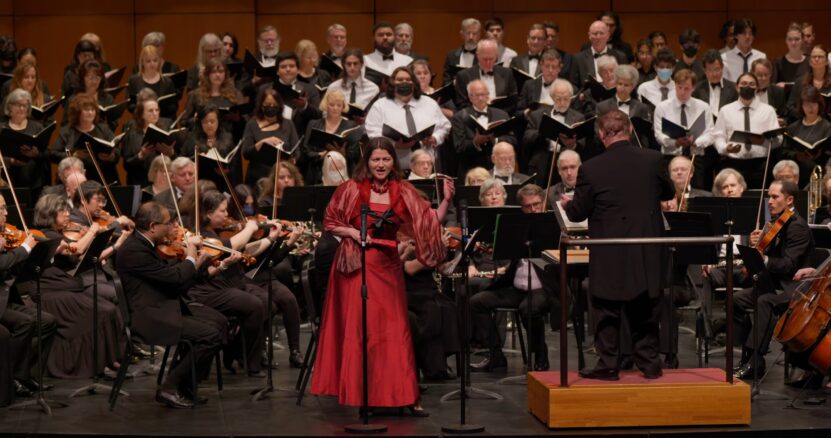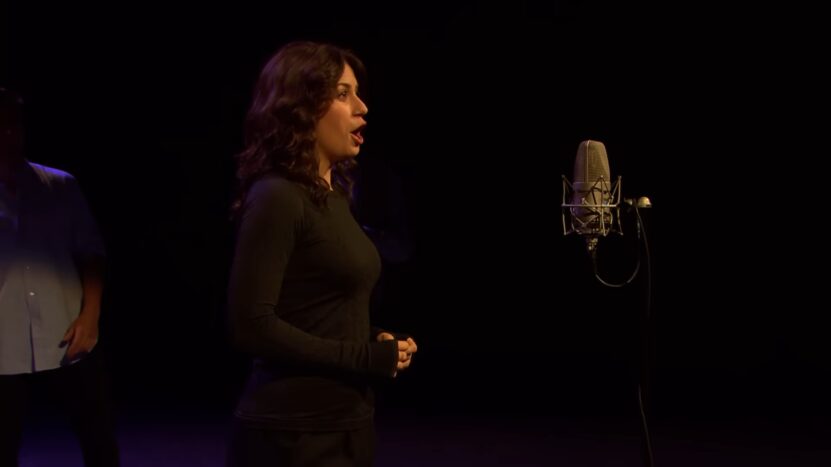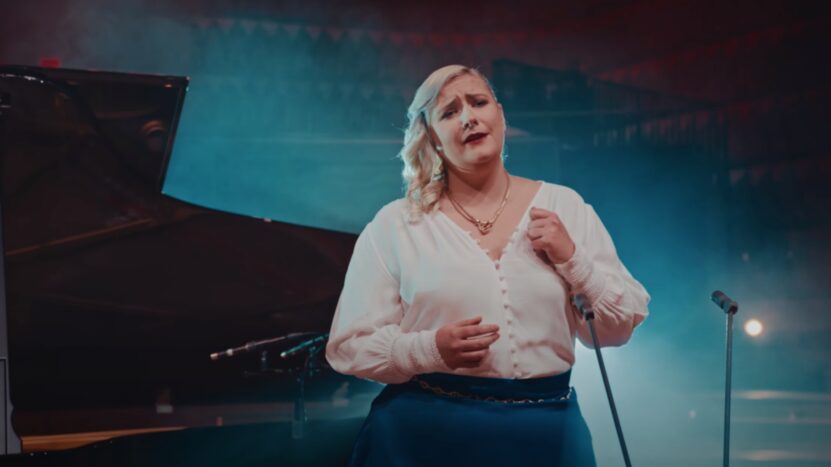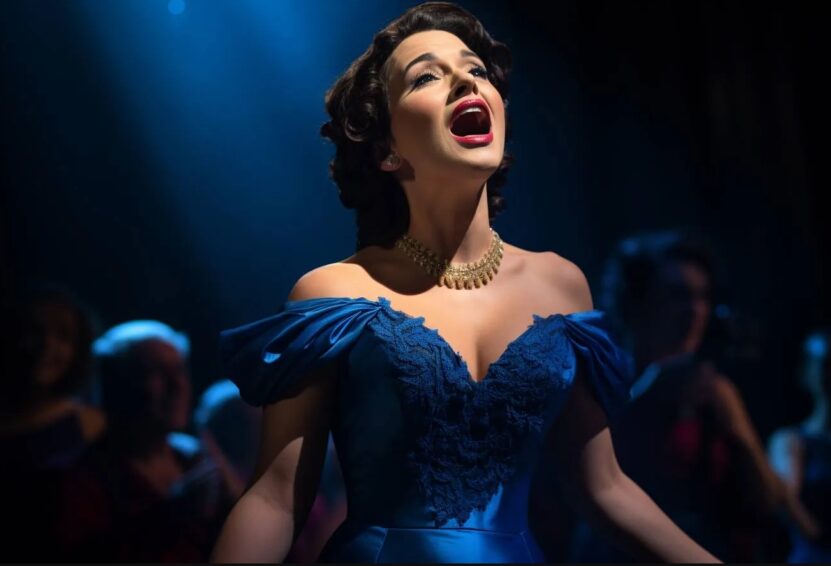In the diverse world of vocal music, mezzo sopranos hold a unique and enchanting position. This article will discuss the essence of what makes a mezzo soprano, exploring not only the technical aspects but also the historical context and the nuanced roles they play in opera and other musical genres.
A Technical Overview
The term “mezzo soprano,” originating from Italian, translates to “middle soprano.” This voice type, characterized by its rich and warm timbre, occupies the middle range of the female singing voice spectrum. Here are the key aspects:
Vocal Range
Typically, a mezzo soprano’s range extends from G3 (the G below middle C) to A5 (the A two octaves above middle C). However, this can vary significantly based on individual capability and training.
Timbre
The defining characteristic of a mezzo is the timbre or tone quality. Mezzo sopranos possess a round, full, and sometimes dark tone that is distinctly different from the brighter and lighter soprano voice.
Subcategories
Within the mezzo soprano category, there are further classifications:
- Coloratura: Known for agility and higher extension, capable of intricate runs and leaps.
- Lyric: Possesses a smooth, mellow tone ideal for expressive melodies.
- Dramatic: Features a powerful, resonant voice suited for intense, dramatic roles.
Historical Evolution and Roles in Opera
In the early stages of opera, around the 17th and 18th centuries, the roles of mezzo sopranos were not as clearly defined as they are today. The castrati often overshadowed female singers, but as their practice declined, mezzo sopranos began to emerge distinctly.
The 19th Century and Beyond
During the Romantic era, composers like Rossini and Bizet started crafting pivotal roles for mezzo sopranos. These roles often involved complex characters that required a depth of emotional expression, aligning well with the mezzo’s rich vocal quality.
Iconic Roles
Several operatic roles have become synonymous with the mezzo soprano voice:
- Carmen (Bizet’s “Carmen”): Perhaps the most famous mezzo role, Carmen embodies passion, independence, and depth.
- Rosina (Rossini’s “The Barber of Seville”): A coloratura role that combines wit and vocal agility.
- Dalila (Saint-Saëns’ “Samson et Dalila”): Requires a dramatic mezzo, combining sensuality and power.
Mezzo Sopranos in Contemporary Music
While opera remains a stronghold for mezzo sopranos, many have ventured into other genres such as musical theatre, jazz, and even pop music. Their versatility allows them to adapt their rich timbres to a variety of styles.
Famous Contemporary Mezzo Sopranos
Several modern mezzo sopranos have gained acclaim:
- Cecilia Bartoli: Known for her virtuosic technique and interpretation of Baroque and Classical music.
- Joyce DiDonato: Recognized for her expressive performances in both opera and recital stages.
- Kathleen Ferrier: A historical figure remembered for her profound emotional depth and rich vocal quality.
Training and Technique
Training a mezzo soprano voice involves a focus on several key areas:
- Breath Control: Essential for sustaining long phrases and supporting the voice.
- Vocal Agility: Especially for coloratura mezzos, agility training is crucial.
- Emotional Expression: Since many roles are dramatically intense, acting and emotional connectivity are vital.
Challenges and Considerations
Mezzo sopranos often face unique challenges, such as:
- Vocal Health: Balancing the rich, often heavy use of the voice with proper technique to prevent strain.
- Role Adaptation: Transitioning between different types of roles and genres requires versatility and adaptability.
The Artistic Impact of Mezzo Sopranos

Emotional Resonance
The unique tonal quality of the mezzo soprano voice lends itself to a deep emotional resonance. This is particularly evident in operatic performances, where the complexity of the characters portrayed by mezzos often demands a profound level of emotional depth and expressiveness.
This emotional connection is not just confined to opera but extends to other musical genres as well, allowing mezzo sopranos to connect with their audience on a deeply personal level.
Versatility in Performance
The mezzo soprano voice is celebrated for its versatility. This flexibility allows mezzo sopranos to explore a wide range of musical styles and roles. From the sultry and seductive Carmen to the innocent and youthful Rosina, the range of characters and emotions a mezzo soprano can convey is vast and varied.
This versatility also enables them to cross over into different musical genres, from classical to contemporary, and even experiment with non-traditional roles and performances.
The Role of Mezzo Sopranos in Music Education
Teaching and Mentorship

Many mezzo sopranos engage in teaching, passing on their skills and knowledge to the next generation of singers. Through their mentorship, young singers learn not just the technical aspects of singing but also the art of performance and the importance of emotional connection in music.
Influence on Vocal Pedagogy
The techniques and methods developed for training mezzo sopranos have significantly influenced vocal pedagogy. Understanding the unique requirements of the mezzo voice has led to more specialized and effective training methods, benefiting singers of all voice types.
Mezzo Sopranos and Cultural Representation
Representation in Opera and Music

Mezzo sopranos often portray characters that defy traditional gender roles, such as trouser roles, where a female singer portrays a male character. This has allowed for a broader representation of gender and identity in opera and music, challenging stereotypes and offering a more inclusive perspective.
Influence on Society and Culture
The roles played by mezzo sopranos, both on and off the stage, have had a broader cultural impact. They often embody strong, independent characters, providing role models of empowerment and resilience. This representation has a significant influence on societal perceptions of women and artists, contributing to a more diverse and inclusive cultural landscape.
What Future Holds
As the world of music continues to evolve, so too do the opportunities for mezzo sopranos. With the advent of new musical styles and the continuous evolution of opera and theatre, mezzo sopranos are finding new ways to express themselves and their artistry.
The Continuing Legacy
The legacy of the mezzo soprano is one of richness, depth, and versatility. As they continue to captivate audiences and inspire future generations of singers, their place in the world of vocal music remains not just secure but essential.
Their contribution to the arts goes beyond their vocal prowess, encompassing teaching, mentorship, and cultural impact.
FAQs
Can a mezzo soprano eventually train to become a soprano?
It’s rare for a mezzo soprano to transition to a full soprano range, as vocal range is largely determined by physical attributes of the vocal cords and the resonating chambers. However, some mezzos can extend their range upwards with training, although they typically maintain their distinctive timbre.
Do mezzo sopranos always sing in an operatic style?
No, they are not limited to opera. They can adapt to various musical styles, including jazz, pop, musical theatre, and classical crossover, depending on their training and interests.
How does a mezzo soprano differ from a contralto?
The main difference lies in their vocal range and timbre. A contralto, the lowest female voice type, has a darker, richer tone and typically sings a range slightly lower than that of a mezzo soprano.
Are there any specific breathing techniques for mezzo sopranos?
While breathing techniques are generally consistent across all voice types, mezzo sopranos often work on sustaining longer phrases, requiring controlled and efficient breath support. Techniques like diaphragmatic breathing are commonly practiced.
How does a mezzo soprano maintain vocal health for demanding roles?
Regular vocal rest, proper hydration, warm-up and cool-down exercises, and avoiding straining the voice are crucial. Many also work closely with vocal coaches and health professionals to maintain optimal vocal health.
What’s the significance of trouser roles for mezzo sopranos in opera?
Trouser roles allow mezzo sopranos to explore a range of expressions and character dynamics not typically assigned to female characters. These roles often challenge traditional gender norms and showcase the versatility of the mezzo soprano voice in portraying strength, vulnerability, and complexity.
Final Words
The mezzo soprano voice, with its captivating blend of warmth, depth, and versatility, remains a vital and mesmerizing part of the vocal music landscape. From the grand stages of opera to the more intimate settings of recitals and contemporary music, mezzo sopranos continue to enchant and inspire audiences around the world.
This exploration into their world reveals not just the technicalities of their craft but also the profound emotional and artistic impact they have in the realm of music. We’ve also written about Concerto and what it represents in the world of music, so make sure to check it out!

